|
This blog entry is largely based on a H.E.S.S. "Source of the Month" article mainly written by Jean Damascene Mbarubucyeye (Desy-Zeuthen) and that will be published on the H.E.S.S. website soon. An extremely energetic flash emitted with a stellar explosion that happend 3 billions years ago in a distant galaxy hit Earth in October 2022 and was recorded as the brightest gamma-ray burst that has ever been detected. It has rapidly be dubbed "The BOAT" (for "Brightest Of All Times") in the GRB community. The flux of gamma rays was overwhelming most detectors and caused changes in the electromagnetic properties of Earths atmosphere. The following figure shows the number of X-ray photons (in millions of counts/second!) detected by the GBM instrument onboard the Fermi satellite for a selected number of GRBs. Many results have been published in a special issue in ApJLetter. See this link for an overview. This chart compares the BOAT's prompt emission to that of five previous record-holding long gamma-ray bursts. The BOAT was so bright it effectively blinded most gamma-ray instruments in space, but scientists were able to reconstruct its true brightness from Fermi data. Credits: NASA's Goddard Space Flight Center and Adam Goldstein (USRA) Gamma-ray bursts (GRBs) are observed as bright X-ray and gamma-ray flashes from distant sources outside of our Galaxy. They come from the deaths of rapidly rotating massive stars and the mergers of compact objects such as neutron stars. For the first kind of GRB, the core of the star collapses and a fraction of the released gravitational energy is fed into a violent blast wave ploughing through the remnants of the star at nearly the speed of light. The resulting electromagnetic emission can be roughly divided into two phases: the prompt phase, the initial bright flashes that typically last up to a few tens of seconds, and the slowly fading afterglow phase that can be detectable over a large part of the electromagnetic spectrum for days or months. During the afterglow, the blast wave produces relativistic shocks that propagate into the surrounding material and accelerate charged particles such as electrons. These accelerated electrons then interact with the magnetic field in the material, emitting X-ray radiation in the form of synchrotron radiation. The physics of GRB afterglows is a prime opportunity for the study of relativistic shocks. The synchrotron emission process, which produces the X-ray emission, has been studied extensively and is well understood; however, the details of emission at higher energies, such as the very-high energy (VHE) gamma-ray (> 100 GeV) domain, is still under debate. In the last few years, a number of GRBs have been detected in VHE gamma rays. This VHE component is usually associated with the inverse Compton scattering of either ambient or synchrotron photons, the latter being known as the synchrotron self-Compton (SSC) scenario. However, a mismatch between observations and the usually employed single-zone (i.e., uniform magnetic field) SSC description was noted in GRB 190829A (see [2] and the June 2021 SOM). Further observations, especially in the VHE gamma-ray domain, are therefore necessary to shed light onto this open question. X-ray lightcurve of the afterglow of the BOAT in comparison to previous GRBs (highlighting bursts detected at VHE energies). From Astro-COLIBRI. On October 9th 2022, the Fermi Gamma-ray Burst Monitor and later the Neil Gehrels Swift Burst Alert Telescope detected and localized GRB 221009A. H.E.S.S. was not able to observe the burst immediately as, due to the full moon at the time, the night sky background was too high for the operation of our highly sensitive instruments. However, observations become possible two days later, on October 11, and continued over more than a week after the burst was first detected. Unfortunately, the campaign was heavily influenced by rather poor atmospheric conditions including cloudy skies and a high aerosol content. Careful analyses of the data acquired by H.E.S.S did not yield any significant detection of VHE gamma rays at the GRB position in the total dataset nor for individual nights. Nevertheless, we were able to derive stringent upper limits on the VHE gamma-ray flux. These can be put into the context of the X-ray afterglow (cf. left figure below) and are useful to constrain the various possible theoretical emission scenarios. An example for this is given in the right figure below.
GRB 221009A had many exceptional features in addition to its exceptional brightness. In particular, the long lived X-ray afterglow spectrum remained consistently hard for several nights; i.e., in the X-ray regime, a larger fraction of the total energy was emitted in higher-energy photons compared to lower-energy photons than is often seen for GRBs at these times. A possibility is that the electrons are continuously accelerated with a remarkably hard spectrum. Why this should be the case is a mystery. A firm detection by H.E.S.S. in such cases would greatly advance our understanding of these rare events, but the upper limits equally play an important role in disentangling the various theoretical models. Another important question that remains to be answered is why some afterglows are gamma-ray bright with comparable X-ray and gamma-ray fluxes (e.g. GRB 190829A), while for others, like GRB 221009A, the VHE emissions seems evidently much weaker. VHE gamma-ray astronomy has a major role to play in this story. References
[1] F. Aharonian et al. (H.E.S.S. Collaboration), H.E.S.S. follow-up observations of GRB 221009A, ApJLetters 946, L27 (2023) [2] Abdalla et al. (H.E.S.S. Collaboration). 2021, Revealing x-ray and gamma ray temporal and spectral similarities in the GRB 190829A afterglow, Science, 372, 1081
0 Comments
The paper is out! Finally! After almost 2 years we can finally talk openly about the amazing observations we obtained with H.E.S.S. in our campaign in late autumn 2019. A bit of context: we have been trying to catch very-high-energy gamma-ray emission from a Gamma-Ray Burst (GRB) since the dawn of Imaging Air Cherenkov Telescopes, i.e. since over two decades. The GRB program of H.E.S.S. is the longest running observation program of the collaboration. Every year for almost 20 years, the observations and trigger conditions are discussed and updated and students sign up every month for 'expert-on-call' shifts that mean that they'll be woken up in the middle of the night to guide the on-site shift crew in GRB observations, These efforts came finally to fruition with the H.E.S.S. observations of GRB 180720B, the first detection of a GRB by an IACT ever. Rather surprisingly, these observations were made several hours after the burst in the period of fading X-ray emission called the afterglow. More in line with expectations, a few months later MAGIC detected a strikingly strong signal from GRB 190114C in the first minutes after the burst. Two bursts in ~20 years... Artist's impression of a relativistic jet of a gamma-ray burst (GRB), breaking out of a collapsing star, and emitting very-high-energy photons. Credit: DESY, Science Communication Lab In the evening of August 29, 2019 a GRB was detected by the Fermi and shortly later by the Swift X-ray satellites. Business as usual for the H.E.S.S. Transients group (that was still part of the larger Extragalactic Science group at that time): the automatic VoSystem calculated the best time window for H.E.S.S. observations which started roughly 4h30 after the burst. To make things more complex multiple ToO programs (including a Galactic Nova outburst and an AGN flaring activity) requested observations for the same night. These conflicts could be settled and observations on the GRB were scheduled. Sidenote: the observations were almost cancelled because the shift crew confused a retraction of a GW event by Virgo/LIGO with a retraction of the GRB. Luckily our expert-on-call (Quentin, a PhD student from LAPP/Annecy) reacted quickly and clarified the situation. So far so good. Although the next day was Saturday I got up early to drive my son and some friends to a basketball camp. This plan fell apart as soon as I checked the shift report from the last night. A signal in the real-time analysis during the observations of the GRB had caused the shift crew and the expert-on-call to extend the observations beyond the originally scheduled window! A frantic checking of the data quality and analysis results followed. Luckily a family friend jumped in to take care of the basketball players in the meantime ;-) I quickly drafted a text for a GCN circular and Astronomers Telegram to allow for our friends operating telescopes in South America to react while it was still dark enough for observations. Maybe I should have stopped for a while and got some coffee: it might have prevented me messing up the dates mention in the GCN/ATEL: the observations took well place in August and not July 🤦♂️. The rest is history... We continued to observe the region of the burst for several days 'just in case', set up an analysis team, rapidly retrieved the data from Namibia (using our lessons learned from GW170817), went through a long list of data quality checks before unblinding the high level analyses. I signed up to conduct one of the two independent analyses, the other one (which would in the end be used for the plots in the paper) was led by Edna (PhD student at MPIK, Heidelberg). Towards the end of the year we had a first meeting in Desy-Zeuthen to compare the results of the two analyses. In preparation of the meeting (i.e. the night before in my hotel room in Berlin) I ran the analysis for the first time on an extended dataset beyond the first two nights of observations. To my surprise I found a signal even in the third night of data taking! In total we could follow the emission for over 56h! This really shattered (at least my own) earlier expectations and extrapolations from Fermi-LAT observations which rather pointed to timescales of minutes for the emission of high-energy photons from GRBs... The light-curve of GRB 190829A in X-rays and VHE gamma-rays (red points). For the first time we could follow the evolution of the emission over several days and show the similarity between the two energy domains. From Science, 2021 We then finalized the analyses and verified that both pipelines gave consistent results, which in the end took a few extra months due to some (in the end very minor) bugs/updates/changes/etc. in the software frameworks. But the fun was not over yet: the theoretical models based on inverse Compton emission that we just had "confirmed" with the papers on GRB 180720B and the MAGIC paper on GRB 190114C, did not fit the high resolution energy spectrum that we managed to derive due to the proximity of the burst. The "modelling group" led by Andrew from Desy-Zeuthen realized that we indeed may need to let go of one of the fundamental limits of synchrotron emission of high-energy electrons. This “burn-off limit” is determined by the balance of acceleration and cooling of the electrons within the accelerating region. Neglecting it allowed to describe the measured gamma-ray energy spectrum almost perfectly... Is this possible? Probably yes, but it would require a more complex configuration of different regions responsible for the acceleration and the synchrotron emission. Maybe also some completely different explanation is possible. Time and a lot of effort by the world-wide community will tell... The energy spectrum of GRB 190829A in the X-ray (gray butterflies) and VHE gamma-ray domains (red butterflies) are strikingly similar and cannot easily be explained by the usually used SSC description (blue bands). Removing the constrains on the maximum energy of the accelerated electrons allows to fit both domains as pure synchrotron radiation. From Science, 2021 In the meantime we are updating the H.E.S.S. observation program with the lessons learned from GRB 190829A to increase our changes for additional GRB observations and prepare the observations with the Cherenkov Telescope Array and especially with the first Large Size Telescope that is already taking data on La Palma. Exciting times! Stay tuned... The paper is available here: science.sciencemag.org/cgi/doi/10.1126/science.abe8560 and don't miss the phenomenal animation done by DESY, Science Communication Lab: A few other articles on the results:
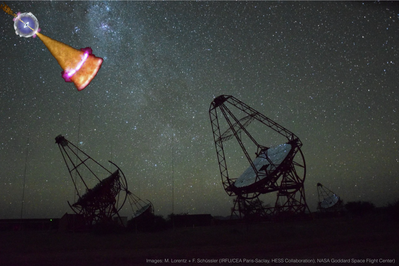 This is one of these rare moments: after decades of (quite often rather frustrating) searches we finally did it! What did we do? We detected very high-energy emission from a gamma-ray burst (GRB). These extremely energetic cosmic explosions typically lasting for only a few tens of seconds. They are the most luminous explosions in the universe. The burst is followed by a longer lasting afterglow mostly in the optical and X-ray spectral regions whose intensity decreases rapidly. The prompt high energy gamma-ray emission is mostly composed of photons several hundred-thousands to millions of times more energetic than visible light, that can only be observed by satellite-based instruments. Whilst these space-borne observatories have detected a few photons with even higher energies, the question if very-high-energy (VHE) gamma radiation (at least 100 billion times more energetic than visible light and only detectable with ground-based telescopes) is emitted, has remained unanswered until now.On 20 July 2018, the Fermi Gamma-Ray Burst Monitor and a few seconds later the Swift Burst Alert Telescope notified the world of a gamma-ray burst, GRB 180720B. Immediately after the alert, several observatories turned to look at this position in the sky. For H.E.S.S. (High Energy Stereoscopic System), this location became visible only 10 hours later. Nevertheless, the H.E.S.S. team decided to search for a very-high-energy afterglow of the burst. After having looked for a very-high-energy signature of these events for more than a decade, the efforts by the collaboration now bore fruit. A signature has now been detected with the large H.E.S.S. telescope that is especially suited for such observations. The data collected during two hours from 10 to 12 hours after the gamma-ray burst showed a new point-like gamma-ray source at the position of the burst. While the detection of GRBs at these very-high-energies had long been anticipated, the discovery many hours after the initial event, deep in the afterglow phase, came as a real surprise. The discovery of the first GRB to be detected at such very-high-photon energies is reported in a publication by the H.E.S.S. collaboration et al., in the journal 'Nature' on November 20, 2019. Who is "we"?
The results were obtained using the High Energy Stereoscopic System (H.E.S.S.) telescopes in Namibia. This system of four 13 m diameter telescopes surrounding the huge 28 m H.E.S.S. II telescope is the world's most sensitive very high-energy gamma ray detector. The H.E.S.S. telescopes image the faint, short flashes of bluish light emitted when energetic gamma rays interact with the Earth's atmosphere (so-called Cherenkov light), collecting the light with big mirrors and focusing it onto extremely fast reacting sensitive cameras. These Cherenkov images allow H.E.S.S. to reconstruct the properties of the interacting gamma-rays and ultimately detect their sources. The High Energy Stereoscopic System (H.E.S.S.) team consists of over 200 scientists from Germany, France, the United Kingdom, Namibia, South Africa, Ireland, Armenia, Poland, Australia, Austria, the Netherlands, Japan and Sweden, supported by their respective funding agencies and institutions. While I was not personally involved in the data analysis for this particular event, I am responsible for the searches for transient (i.e. rapidly fading) phenomena within the H.E.S.S. collaboration (technically speaking I am the convener of the "Transient" working group). Among the various topics covered in this group, searches for emission from GRBs have always been (and will obviously remain) the highest priority. Other searches include the quest for gamma-ray emission associated to Gravitational Waves, high-energy neutrinos, Fast Radio Bursts, Novae and Supernovae as well as flares from AGN, stars, magnetars, etc. What does this mean and what is next? The very-high-energy gamma radiation which has now been detected not only demonstrates the presence of extremely accelerated particles, but also shows that these particles still exist or are created a long time after the explosion. Most probably, the shock wave of the explosion acts here as the cosmic accelerator. Before this H.E.S.S. observation, it had been assumed that such bursts likely are observable only within the first seconds and minutes at these extreme energies. At the time of the H.E.S.S. measurements the X-ray afterglow had already decayed very considerably. Remarkably, the intensities and spectral shapes are similar in the X-ray and gamma-ray regions. There are several theoretical mechanisms for the generation of very-high-energy gamma light by particles accelerated to very high energies. The H.E.S.S results strongly constrain the possible emission mechanisms, but also present a new puzzle, as they request quite extreme parameters for the GRB as a cosmic accelerator. Together with the observations of very-high-energy gamma radiation following later GRBs with MAGIC (published in the same edition of Nature on Nov. 20, 2019) and again with H.E.S.S. (GRB190829A), this discovery provides deeper insights into the nature of gamma-ray bursts and opens the window for deeper observations and further studies. For more than a decade, Cherenkov telescopes such as H.E.S.S., MAGIC and VERITAS have searched for very-high-energy gamma radiation from GRBs and continuously improved their observation strategies. Now several GRBs have been detected at very high energies within a very short time, and we now know that these bursts are emitting at extreme energies for many hours. This opens entirely new perspectives for further observations with the current instruments and is even more promising for the successor instrument, the Cherenkov Telescope Array, which will enable us to study these stellar explosions in much more detail. A few highlights of the media coverage:
|
AuthorMyself ;-) Archives
January 2024
Categories
All
|
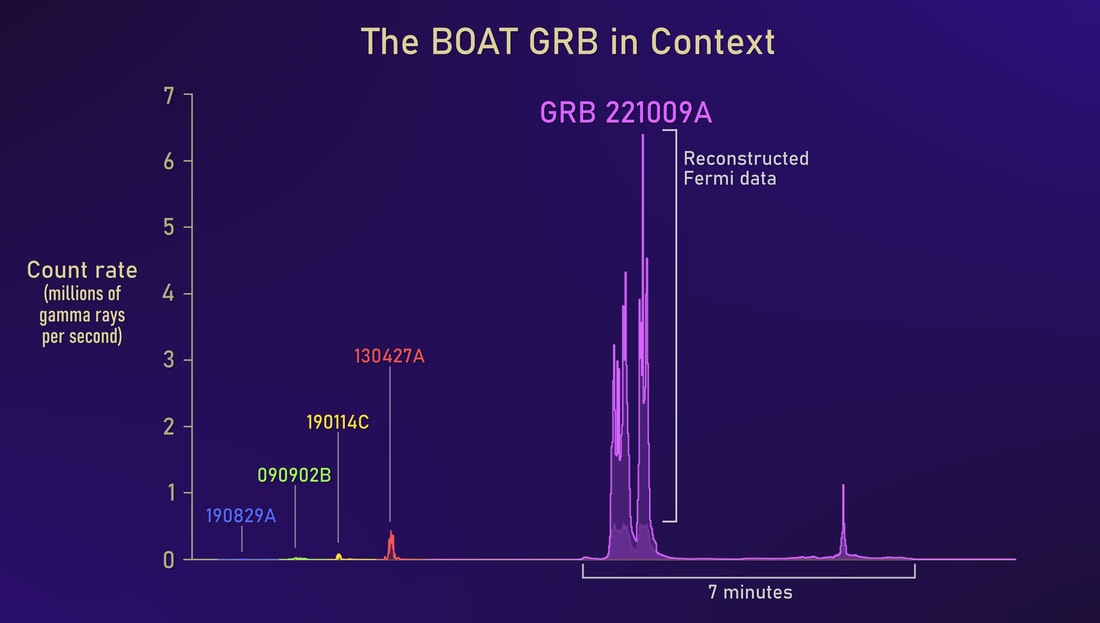
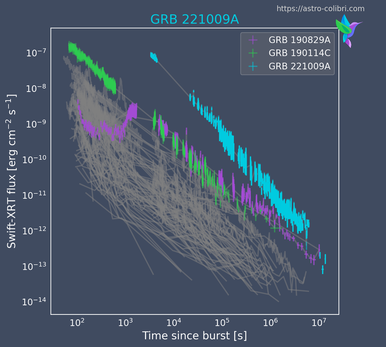
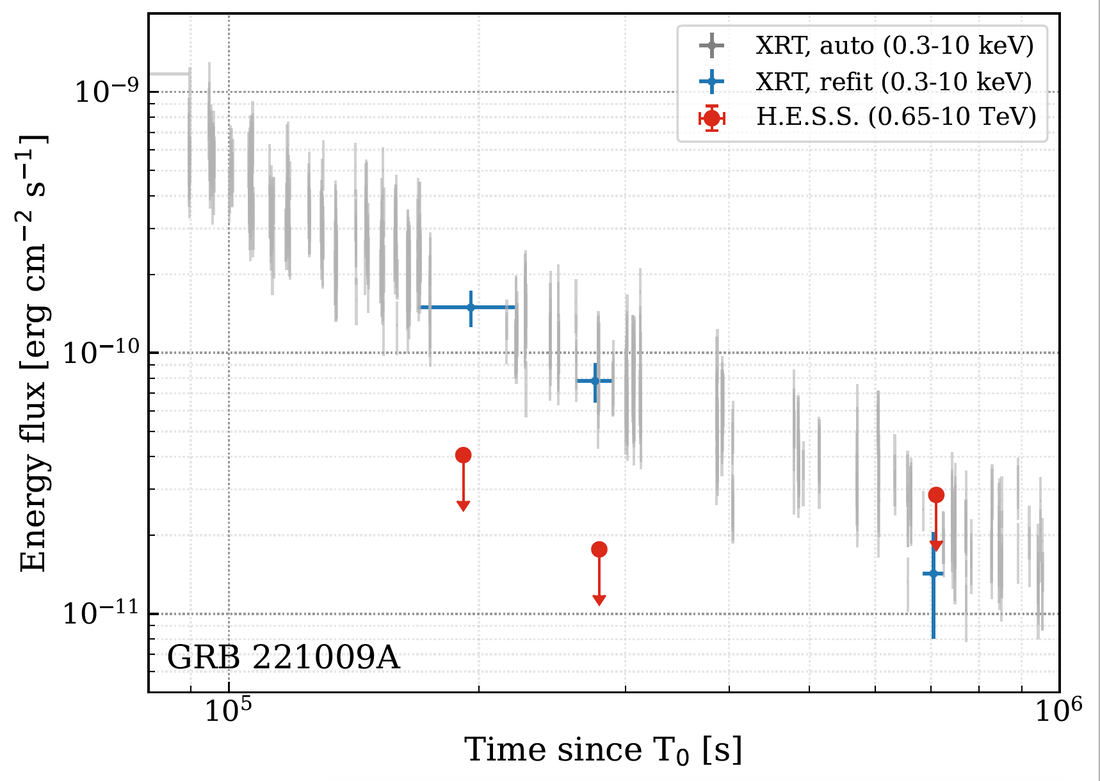
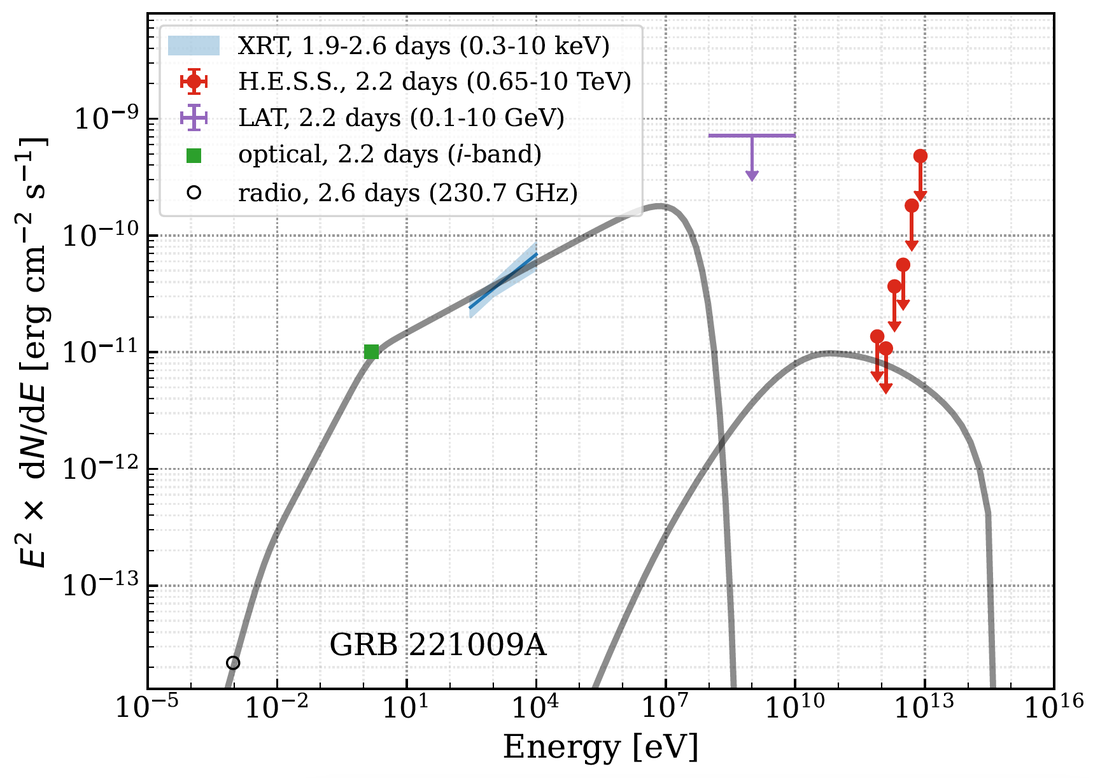
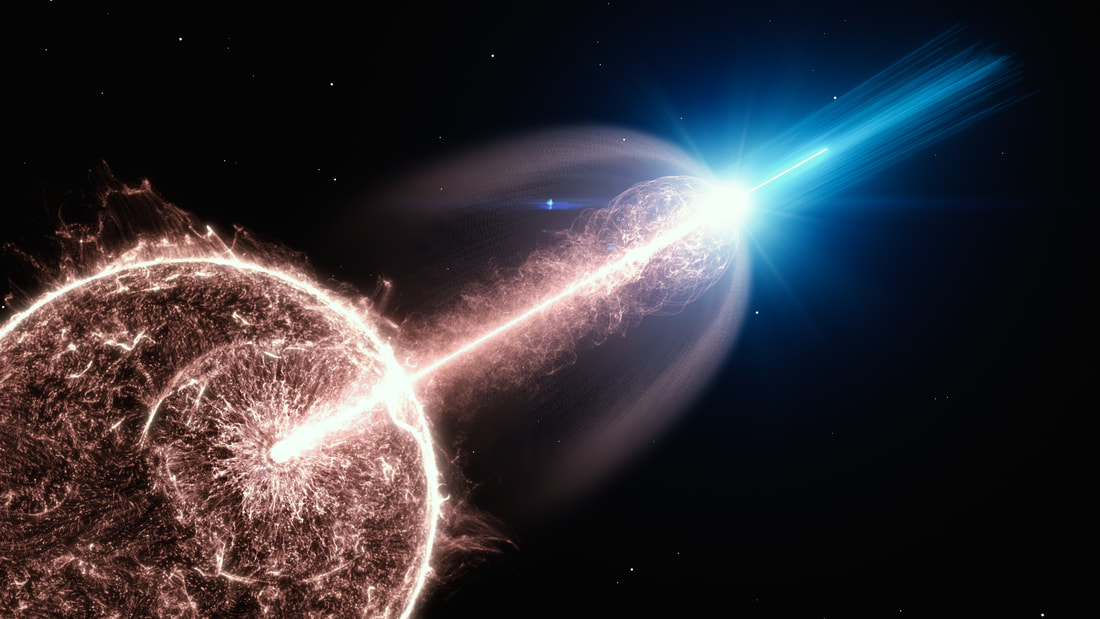
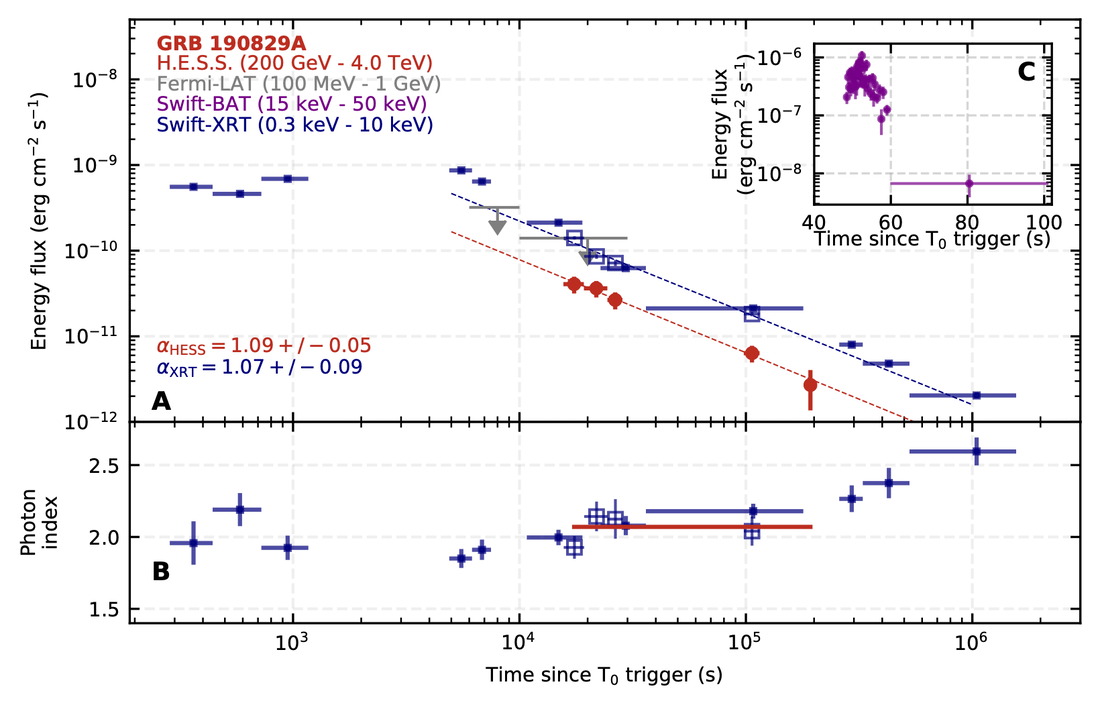
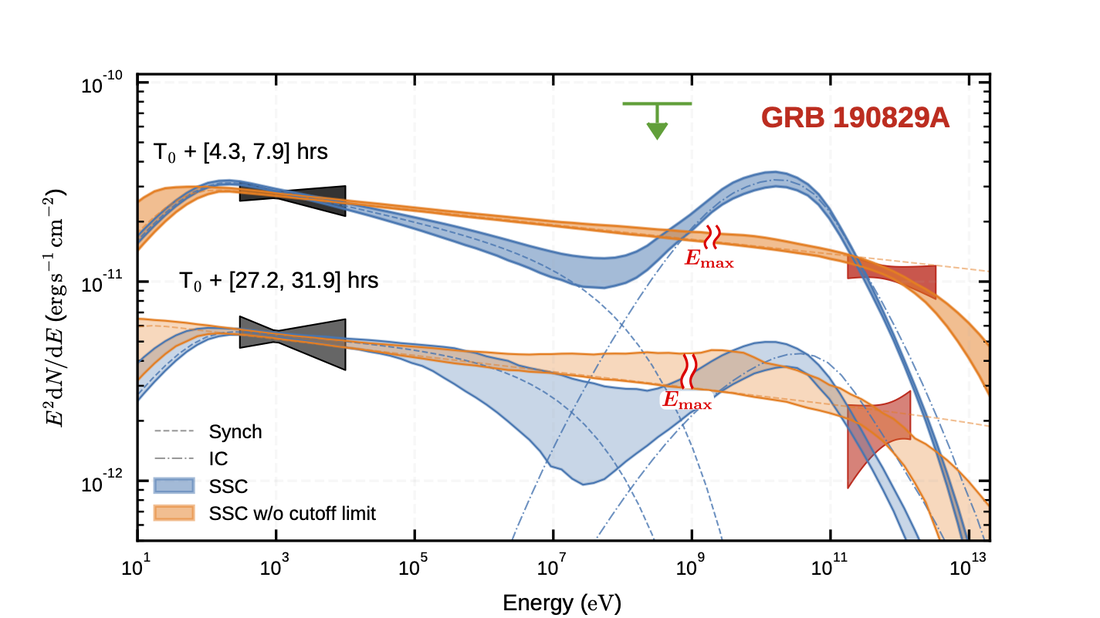
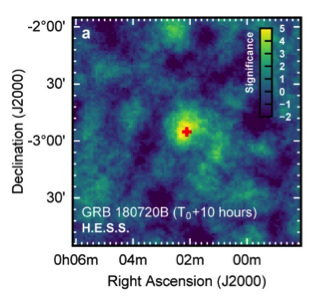
 RSS Feed
RSS Feed